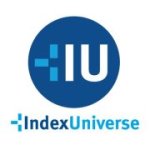Industry Pro Thomas Halikias contributed the following “Single Stock Futures…A New Dawn?” to Tabb Forum. Excerpted version is below, full article available by clicking on Tabb’s logo..
In nearly every conversation about single stock futures – and they’re happening more frequently than ever these days – several typical misconceptions emerge:
- “Futures? We don’t trade futures.”
- “Single stock futures? They don’t seem very liquid.”
- “How do single stock futures minimize our U.S withholding tax?”
The product’s unfortunate association with speculative trading strategies often found in illiquid commodities has been a significant barrier in extolling the many virtues of this sophisticated financing and stock lending instrument. While customers can and do trade single stock futures in a speculative manner, the more subtle uses of them can be easily overlooked. Additionally, trading single stock futures does not specifically require Commodity Future Trading Commission (CFTC) registration – exemptions are available for most equity-based strategies.
Single stock futures can be packaged against the underlying equity to either finance a long equity position or to “lend” the underlying equity to parties interested in obtaining the long shares for an extended period of time.
For example, if an institution wishes to finance a specific equity position, it would sell the underlying equity simultaneously with the purchase of the equity’s single stock future. This simultaneous transaction is called an exchange for physical (EFP) and bears absolutely no directional market risk. The pricing differential is based solely on market financing rates.
For a “lending” transaction, the institution would perform a similar simultaneous equity for future EFP but in this case the pricing differential would be based on the market rate for borrowing the stock. In both transactions, the institution would select the appropriate future expiration cycle to match their desired time frame for financing or “lending” the security. Continue reading





